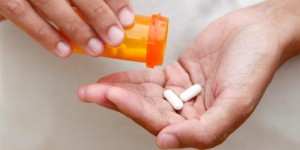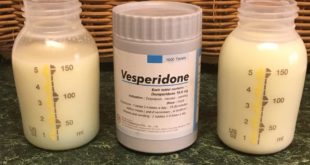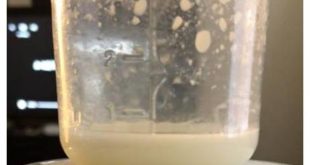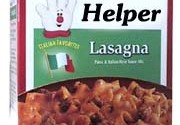 As the number of nursing mothers continues to increase, so does the use of drugs, both legal and recreational. As a nursing mother, you should be aware that there are four things we know for sure about drugs and breast milk, in order of importance:
As the number of nursing mothers continues to increase, so does the use of drugs, both legal and recreational. As a nursing mother, you should be aware that there are four things we know for sure about drugs and breast milk, in order of importance:
- Most drugs pass into human milk.
- Drugs must pass into your bloodstream before they can appear in your milk.
- Almost all medication appears in very small amounts, usually less than 1% of the maternal dose.
- Very few drugs are contraindicated for nursing mothers.
The list of drugs which are unsafe for breastfeeding moms is very small. The vast majority of medications can be taken without harm to the baby. The issue of which drugs are safe to take during lactation is quite complicated. Many factors must be taken into consideration, such as:
- The route of administration: Your baby is always exposed through the GI tract, but drugs can enter your system several different ways: orally, intravenously, intramuscularly, topically, or through inhalation. Topical medications (skin creams) and medications inhaled or applied to the eyes or nose reach the milk in lesser amounts and more slowly than other routes and are almost always safe for nursing mothers; oral medications take longer to get into the milk than IV and IM routes (the drug must first go through the mother’s GI tract before it enters the bloodstream, and the milk supply)-with IV drugs, the medications bypasses the barriers in the GI tract to enter the milk quickly and at higher levels, and with IM injections, drugs transfer quickly into the milk because the muscles have so many blood vessels, so the drug enters the bloodstream quickly.
- The amount taken: The higher the dosage, the more the drug transfers into milk.
- How often you take the drug: Medications taken 30 to 60 minutes before you feed are likely to be a peak blood levels when your baby nurses.
- Your baby’s age and health: Premature infants have immature kidney and liver functions and may have trouble processing and eliminating even small quantities of drugs that might not cause problems for larger, full-term infants; however, even full-term baby’s protective metabolic systems are not fully developed for the first week of life, so they may not be able to handle chemicals in the milk as well as a baby who is several months old. Babies who are seriously ill, especially those with immune system disorders, may have less ability to metabolize the same amount of medication than a healthy baby.
- The frequency and volume of feedings: The baby who is nursing once or twice a day, and is supplemented the rest of the time, will receive less of a drug than the baby who is exclusively breastfed and may nurse 10-12 times a day.
- Duration of drug therapy: A medication taken for weeks or months may have a greater impact on nursing than one taken for just a few days.
- The type of medication: Characteristics such as the molecular weight, how fat soluble the drug is, and how long it takes for it to be eliminated from your system, or it’s half-life, all affect how much of the drug is transferred into your milk.
In the last decade or two, as breastfeeding rates have increased, so have the accuracy of the methods we use to measure drugs in human milk. This is good because in certain situations, such as nursing a very sick premature baby, knowing what medications appear in even very tiny amounts can be significant. On the other hand, some doctors are hesitant to prescribe any medication for a nursing mother once they know that even a tiny amount enters the mother’s milk. Many doctors are afraid to prescribe a drug because of the conservative approach taken toward giving drugs to a pregnant woman. They feel that if a drug might possibly cause birth defects in a pregnant woman, then they shouldn’t give it to a lactating woman. The difference is that while the placenta lets drugs enter to cross into the developing fetus’s bloodstream, the breast serves as a very effective barrier for a fully developed infant.
We also live in a society, which, in general, doesn’t place a high value on breastfeeding, but does believe in suing anyone and everybody, especially doctors. Doctors tend to err on the side of caution and recommend that a mother wean rather that do research and reassure the mother that the medication is safe for her baby (as the majority of drugs are), or explore alternative, safer medications. Both of these options involve the doctor’s willingness to spend time on research, and obtaining access to good lactation information.
Many doctors don’t have the training or the resources to access this kind of information. Most don’t have specific reference books dealing with drugs and breastfeeding in their office, especially if they are not pediatricians or obstetricians. Most of the time, their primary source of drug information is the famous PDR – (Physician’s Desk Reference-also known as the doctor’s bible…).
You should be aware that the PDR contains very little information about breastfeeding, and bases its recommendations on the idea that no drug should be taken by a nursing mother unless it has been proven absolutely safe in all circumstances. The problem with that is that there is virtually no drug in the world, including Tylenol, that can be said to be absolutely safe all the time. The PDR is not the best source of breastfeeding information, because it is an unfortunate fact that pharmaceutical manufacturers often discourage breastfeeding solely for fear of litigation, rather than for well-founded pharmacological reasons.
In deciding which drug to take, you should always look at the situation from a risk/benefit perspective: The benefits of breastfeeding are well known and undisputed, so doctors should recommend a mother wean only when there is scientific documentation that a drug will be harmful to her infant. In the rare cases where that is proven, a doctor who believes in the value of breastfeeding should take the time to explore alternative therapies, or if nursing must be interrupted, encourage the mother to continue pumping her milk to maintain her supply and return to breastfeeding as soon as possible. If your doctor prescribes a drug which he says in incompatible with breastfeeding, it is reasonable to ask for documentation and/or alternative medications. If your doctor isn’t flexible about this, and doesn’t understand how important continuing to breastfeed is to you, it makes sense to seek another opinion.
Here are some general guidelines for taking drugs while nursing:
- Only take a medication if you really need it. Consider alternative, non-drug therapies if possible.
- If you have a choice, delay starting the drug until the baby is older. A drug which might cause problems for a newborn may be fine for an older, larger, more mature infant.
- Take the lowest possible dose for the shortest possible time.
- Avoid drugs with long-half lives, sustained-release preparations, or high M/P (milk to blood) ratio. If the M/P ratio is one or higher, that means that more of it is transferred into the milk.
- Schedule the doses so that the lowest amount gets into the breast milk (take it soon after a feeding, preferably a night feeding, rather than right before nursing).
- Watch for reactions such as sleepiness, rashes, diarrhea, colic, etc. Although reactions are rare, it is important to keep your doctor informed of any changes.
- If you must take a drug that is contraindicated, and no alternatives are available, get a good electric pump to maintain your milk supply if you need to wean for more than a day or two. Your supply will build up when the baby starts nursing again.
Some very general information about drugs that are usually considered safe to take during breastfeeding follows:
- If the drug is commonly prescribed for infants, it is most often safe to take while nursing, because the baby generally gets a much lower dose from the milk than he would from taking it directly. Examples are most antibiotics, such as amoxycillin.
- Drugs considered safe during pregnancy are usually, but with a few exceptions, safe to take while nursing. When you’re pregnant, medication that gets into your bloodstream has a direct line from mom to baby through the placenta; when you’re breastfeeding, drugs that enter your bloodstream are filtered through the breast, and less gets into your milk.
- Drugs that are not absorbed from the GI tract (stomach or intestines) are usually safe. Many of these drugs are injected, such as heparin, insulin, lidocaine, or other local anesthetics. Immunizations such as German measles, flu shots, TB tests, or Hepatitis A and B, are not harmful to the baby – even the ones with live viruses. Topical medications (those applied to the skin) are nearly always safe because they don’t enter the bloodstream.
Many nursing mothers experience some degree of postpartum depression. It’s estimated that as many as 80% of new mothers experience ‘postpartum blues’, and 10-15% report clinical depression. Antidepressant medications and their use by nursing mothers have been studied extensively, and more and more women are currently being treated for depression, which often occurs during the postpartum period. Some studies suggest that the one year old infants of mothers who are depressed may not exhibit normal neurobehaviorial development. It is therefore important to treat depression and also to continue nursing during treatment, because one of the many benefits of breastfeeding is its positive effect on neurodevelopment. Mothers who are seriously depressed or suffer from other mental disorders have a difficult time adjusting to their new roles as mothers, and medication can help keep things on a more even keel. Becoming a mother and assuming the new responsibilities of parenting are stressful events for all new mothers, but much more so for mothers who are also dealing with managing illness such as depression, anxiety, and bipolar disorder.
On the basis of the evidence of many research studies, it’s been determined that as a group, psychotropic drugs are generally regarded as safe for use by breastfeeding moms, so their health care providers don’t need be overly concerned if a woman needs to be treated while she is breastfeeding.
In most of these medications, such a small amount gets in the milk that blood levels are usually too low to be measured. This is true for the majority of SSRIs (Seretonin Specific Receptor Inhibitors) like Paxil or Zoloft; TCAs (Tricyclic Antidepressents) like Elavil; and Mood Stabilizers like Valproic Acid (Depakote). Wellbutrin (Zyban) is an older antidepressant that has a different structure from SSRI and tricyclic medications. It may appear in milk, but the amount is so low that it is unlikely to cause problems in the breastfed baby. It is often used to help with smoking cessation.
Nursing moms should work with their health care providers to develop a treatment program that works for them, but should not avoid treating disorders like severe depression just because they are breastfeedng. As with any medications, mothers should be aware of the possibility of side effects that might develop during treatment, like sedation or withdrawal symptoms, and monitor their babies closely. It’s important for nursing moms to work closely with their doctors when receiving psychotropic medications, as some have a better safety profile than others, but in nearly all cases, an effective medication can be taken safely while continuing to breastfeed.
The herbal preparation St. John’s Wort is currently being studied extensively, but there is not as much information about its effect on breastfeeding as there is about the prescription medications to treat depression. Because there is more information available about these other medications, it is suggested that they be used during lactation rather than St. John’s Wort. Use of this herb is not recommended during pregnancy.
For information about OTC (over the counter) medications, see When a Nursing Mother Gets Sick.
There are some prescription drugs which should seldom or never be taken during breastfeeding. These include Bromocriptine (also called Parlodel – this used to be given to formula feeding mothers soon after birth to dry up their milk, but was discontinued due to side-effects); Ergotamine (used to treat migraines), Retanoids. Tetracyline antibotics (long term use may lead to discoloration of baby’s teeth) and Cyclosporine, Cyclophosphamide, Methotrexate, and Doxorubicin, used to treat cancer or organ transplant rejection.
There are also a number of radioactive compounds that require temporary cessation of breastfeeding. A nuclear medicine physician can work with you before the test is done to use a compound that has the shortest excretion time in breastmilk. Try to pump enough milk to freeze before the test to feed the baby during the time the milk is unsafe. Pump to maintain your milk production but discard your milk until it is screened by the radiology department to make sure it is safe to resume nursing.
There are some “recreational drugs” that should not be used at all, or used only in moderation while you are nursing. These include alcohol, caffeine, nicotine, marijuana, cocaine, heroin, hallucinogens, and methamphetamines. With cocaine, heroin, PCP (angel dust), and LSD, the data is clear: they should never, EVER be used by nursing mothers, even in small doses. They can and do cause serious medical problems in you and your baby. If you must abuse these drugs, don’t nurse your baby – and get some help.
Although ideally, all nursing mothers would be drug-free all the time, the reality is that many mothers will smoke cigarettes, drink alcohol or coffee, toke on a joint, or take uppers occasionally. These drugs are so prevalent that it is worth addressing their use.
We get back to that risk/benefit thing we discussed earlier. We already know the benefits of breastfeeding versus the risks of artificial feeding. Although none of the drugs mentioned above are good for you or your baby, there is little or no evidence of serious harm, used in moderation.
When it comes to smoking, avoid having the baby breathe second-hand smoke of any kind. Many moms are motivated to quit smoking during pregnancy, but many start back after their baby is born. Nicotine is one of the most addictive drugs, possibly even more addictive than heroin. Babies absorb more nicotine from passive smoke than from the nicotine in breast milk. Babies exposed to smoke have a higher incidence of respiratory illnesses, ear infections, and colic. Most importantly, they have a much higher risk of SIDs.
Breastfeeding has a protective effective effect against all of the above, so it’s much safer to continue to breastfeed while smoking cigarettes than it is to formula feed and deprive the baby of all the proven benefits of breast milk. Maureen Minchin states: “Clearly, it is not ideal to smoke and breastfeed. But it is worse to smoke and not to breastfeed.”
In large doses, nicotine can cause low milk supply, poor let-down reflex, and intestinal upsets in the baby. If you can’t quit, smoke after you nurse, don’t smoke around the baby, and cut down as much as you can.
Marijuana is the most commonly used illegal drug among nursing mothers. The active ingredient, THC, is concentrated in human milk and may make your baby sleepy. Inhaling passive smoke increases the amount he absorbs. As with nicotine, exposing your baby to second-hand smoke increases the amount of the drug he receives. Because there is little evidence of harm, it is probably better to continue nursing if you smoke pot occasionally than to wean and deprive the baby of the proven protective benefits of breastfeeding.
Even though there is no evidence that occasionally consuming alcohol in moderation poses a risk for your baby, the safety of drinking alcohol during lactation is a subject of much heated debate. Here’s how some experts weigh in on the topic:
- The AAP (American Academy of Pediatrics) considers alcohol compatible with breastfeeding. It lists some possible side effects of alcohol consumed in large amounts as drowsiness and weakness in the baby, and decreased milk production and inhibited let-down reflex in the mother, which may result in low weight gain.
- Dr. Thomas Hale (Medications and Mother’s Milk, 2012 ) states that “mothers who ingest alcohol in moderate amounts can generally return to breastfeeding as soon as they feel neurologically normal.” Rule of thumb: If you’re sober enough to drive, you’re sober enough to nurse your baby.
- Dr. Jack Newman (The Utimate Book of Breastfeeding Answers) says “Reasonable alcohol intake should not be discouraged at all. As is the case with most drugs, very little alcohol comes out in the milk. The mother can take some alcohol and continue breastfeeding as she normally does. Prohibiting alcohol is another way we make life unnecessarily restrictive for breastfeeding mothers.”
When a nursing mom drinks, the alcohol enters her bloodstream quickly, but only a small amount (less than 2%) transfers into her breast milk. Because alcohol doesn’t accumulate in breast milk, it leaves the milk as it leaves the bloodstream. As the blood alcohol levels go back down, so does the amount of alcohol in the milk. That’s why drinking lots of water or coffee, or ‘pumping and dumping’, won’t eliminate the alcohol from the breast milk any faster.
Here are some recommendations on reducing the amount of alcohol intake:
- Use expressed milk to feed if needed after drinking.
- Eat before and while drinking to minimize the alcohol absorption
- Drink slowly. Sip your drinks and space them 2-3 hours apart.
- Choose drinks low in alcohol, or diluted with water or juice.
- Factor in your baby’s age. Infants under four weeks of age detoxify alcohol alcohol at a lower rate than babies over three months, due to liver maturation, and preemie’s livers are less mature than full-term babies. As with any drug, you need to be more conservative if you are nursing or pumping milk for a tiny preemie or new born than if you are breastfeeding an older, more mature baby.
There is no reason to feel guilty about drinking an occasional beer or a glass of wine with dinner. If you want to be conservative, wait at least two hours for every drink you consume before you nurse your baby. This means that if you want to go out and celebrate your anniversary and really blow it out, you nurse the baby before you leave, feed him expressed milk or formula during the night, have several drinks (I found that the combination of sleep deprivation and not drinking for nine months of pregnancy made me a very cheap date – one or two drinks and I was ready to nod off…) and then start nursing again in the morning.
The caffeine in five or less cups of coffee each day will not cause a problem for most nursing mothers and babies, because less than 1% of the maternal dose is transferred to the infant. Peak levels of caffeine are found in breast milk about an hour after the moms ingests it. If you consume more than that, some babies will be fussy and over-stimulated. Some babies and mothers are more sensitive to caffeine than others. If you think it’s causing a problem, try substituting decaf products for a couple of weeks and see if it makes a difference.
When you use amphetamines in the usual prescription doses, usually prescribed for ADHD or narcolepsy, they are compatible with nursing. If you abuse them, they can accumulate in your milk, but even then normally don’t cause problems for the baby. Symptoms in the baby with amphetamine abuse may include irritability and sleeplessness – so don’t take more than the doctor recommends. Duh.
Most drugs, including chocolate (yes, it’s kind of a drug) and herbal preparations are safe when taken in moderation. Keep this in mind while you are nursing. No, you don’t have to be Mother Teresa and give up all your vices. Yes, you do have to exercise common sense and self control and make some sacrifices for this new little person in your life – but not as many as you had to make while you were pregnant.
For more detailed information about the safety of specific drugs during lactation, here are some resources:
The AAP (American Academy of Pediatrics) has published a statement called “The Transfer of Drugs and Other Chemicals Into Human Milk”. Because so many new drugs have come out during the past several years, many drugs currently in use have not been reviewed by the AAP and don’t appear on this list. Here’s a link to the AAP website where you can find more detailed information about the current recommendations: http://aappolicy.aappublications.org/cgi/content/full/pediatrics;108/3/776
An excellent resource for information about the safety of drugs during breastfeeding is Dr. Thomas Hale, an expert on drugs and breastfeeding. He is the author of a reference book called Medications and Mother’s Milk, and updates it every couple of years. It provides detailed information on drugs, including herbs, and includes useful information about the drug’s half-life, milk/plasma ratio, side effects, AAP ratings, and more. He also has a book called Clinical Therapy in Breastfeeding Patients (first edition) that gives an overview of medications that are useful for specific conditions. This is useful for doctors who are prescribing for lactating patients, especially because it gives alternative medications for different conditions.
It’s important to know that not all herbal preparations are safe to take while breastfeeding. While herbs are “natural”, they can be quite potent and cause serious side effects. For more information about herbs and breastfeeding, check out this article on Kellymom: http://www.kellymom.com/herbal/
One helpful resource for nursing moms and their health care providers is Dr. Thomas Hale’s new InfantRisk Center. The InfantRisk Center provides up-to-date evidence-based information on the use of medications during pregnancy and breastfeeding. You can call them Monday-Friday 8am-5pm central time at (806)-352-2519, or visit their website at www.infantrisk.com
The Infant Risk Center recently released an iPhone/Android app with info on med safety of pregnant & breastfeeding moms, available to HCPs for a yearly fee. MommyMeds is the consumer version of the app. Find out more at their website: http://www.infantrisk.com/
Another resource is the free Apple LactMed App for iPhone/iPod Touch. You can use it to find information about maternal and infant drug levels, possible effects on lactation and on breastfed infants, and alternative drugs to consider. You can find out more at http://toxnet.nlm.nih.gov/help/lactmedapp.htm
Remember that it’s almost always possible for a mother to continue nursing, even in the rare cases where temporary weaning is necessary. Remember how important breastfeeding is to you and your baby, and try to find a supportive health care provider who believes that nursing is as important as you do.
The information in this article came from the AAP Policy Statement, The Transfer of Drugs and Other Chemicals Into Human Milk, revised 2010; Dr. Thomas Hale’s book Medications and Mothers’ Milk, 12th Edition, 2012; and “Lactating Mothers and Psychotropic Drugs:http://www.ncbi.nlm.nih.gov/pmc/articles/PMC3031938/
(Edited September, 2015)
Anne Smith, IBCLC
Breastfeeding Basics
*Please ‘Pay it Forward*
If you found any of the information in this article, helpful, please consider making a small donation to my favorite cause – Project Pets: Spay, Neuter, Love – an all volunteer, non-profit organization that provides free spay and neuter services for homeless rescue dogs and cats…because every baby deserves a home, whether they have two legs or four! To find out how you can help, visit Project Pets on Facebook.
 Breastfeeding Basics
Breastfeeding Basics





